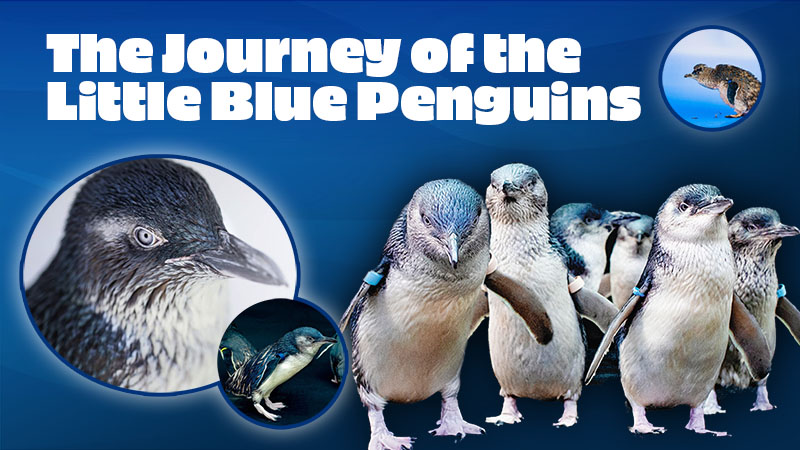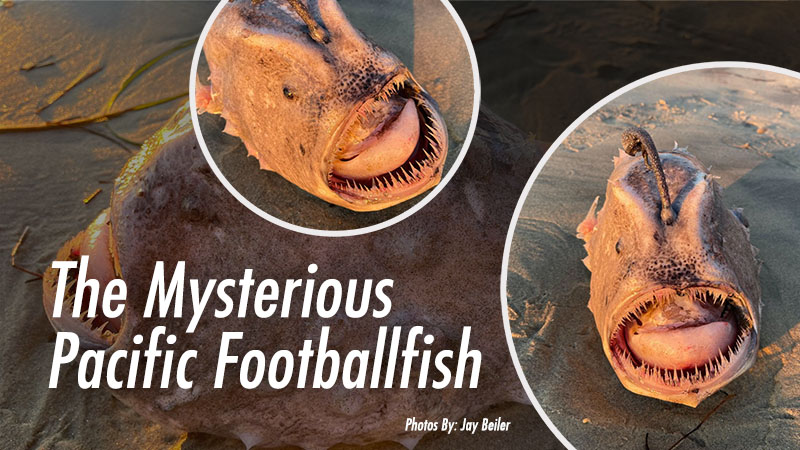-
Little Blue Penguins Find New Home at Birch Aquarium

They are known for their big personalities and rather small stature. Standing less than 12 inches tall and weighing around 2 pounds, Little Blue Penguins are the smallest species of the flightless bird. While the population of Little Blues is considered stable in most locations, declines have been observed in some areas. While in the […]
-
The Story Behind the Elusive Pacific Footballfish

It looks like something out of a science fiction movie. A black blob with nightmarish spiny teeth, small black eyes, and prickly skin. A monster that never sees the light of day, using a bio-luminescent bulb swinging from its head to not only light its path, but also attract prey as well. The Pacific Footballfish […]
-
Marine Life Observation on a Changing Planet
Southern California’s coastline spans 840 miles, from the Oregon border to the North all the way South to San Diego. The ocean provides a bounty of essential life-supporting services. Yet, a changing climate and increasing human uses are altering marine ecosystems and their ability to continue to provide this wealth of essential services. Off the […]
-
Our Impact on the Earth
“Mother Nature is not happy right now and she’s trying to tell us, in many ways,” says Kimberly Prather, Professor of Climate, Atmospheric Science, and Physical Oceanography at UC San Diego. New weather patterns and events are causing concern but how do we know these changes are caused by human activity? Climate scientists are looking […]
-
From Sea to Pharmacy
The vastness of the ocean is only surpassed by the biodiversity within it; from familiar and unfamiliar mega-fauna, to every microbe and virus inhabiting every corner of the seas – from the deep freeze of the Antarctic to the scorching plumes of volcanic seafloor vents. Paul Jensen describes how he and other researchers are tapping […]
-
Understanding the Arctic Climate System
The Arctic is changing rapidly in response to global climate and economic activity and yet much of it remains unexplored with modern scientific techniques. Jeff Bowman is a biological oceanographer who studies marine microbial communities. In this presentation at the Birch Aquarium at Scripps Institution of Oceanography he describes his group’s work in the Arctic […]
-
California Seaweed
Kelp cutters once harvested tons of the nearshore kelp off the San Diego County coastline, producing additives for your ice cream, beer and pharmaceuticals. And of course, anyone who has had a California Roll or a bowl of miso soup is familiar with the centuries-old use of Nori. But now Scripps researchers are working to […]
-
Eavesdropping on Whales
Since ancient seafarers first heard the strange calls of whales, humans have been fascinated by their meaning – from Flipper’s clicks and trills to the long serenades of Humpbacks. Inhabiting the dark ocean depths, whales use sound in many different ways – from feeding to navigating to finding friends and family. Join postdoctoral scholar Goldie […]
-
Feeling the Heat: The Biology of Ocean Warming
The effects of climate change on fauna and flora across the globe are more and more evident – the Pika has changed its range, and may disappear, sea stars have been visited by a withering collapse in population, insects from bark beetles to mosquitoes are inhabiting new territories bringing disease to humans and destruction to […]